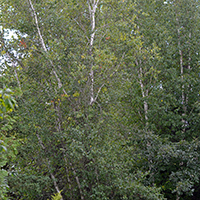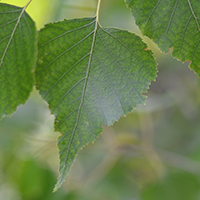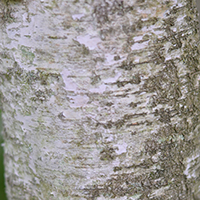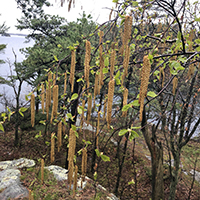What gray birch looks like
Size and shape
- Small tree that can live for about 50 years.
- Reaches 12 metres tall.
- Trunk reaches 15 centimetres in diameter.
- Trees usually grow in a clump with trunks leaning outwards.
- Branches are thin and can bend into an ‘s’ shape with age.
Leaves
- Triangle-shaped leaves (4 to 7 centimetres long).
- Have a long, pointy tip.
Bark
- Dark reddish-brown when tree is young.
- Turns a chalky white colour with age.
Flowers
- Yellow catkins bloom in spring.
Where gray birch is found
Gray birch is relatively sparse in Ontario. It grows as a native only in the eastern-most parts of the province but is now widely planted in Southern Ontario.
What you need to know to grow gray birch
- Moisture: tolerates any moisture level.
- Soil: grows best in sand or gravelly soil but can grow in many soil types.
- Shade: requires full sun.
- Note: birch trees grow quickly and are a great addition to a new garden.
Benefits and uses of gray birch
Wildlife benefits
Gray birch is a food source for several bird and mammal species:
- songbirds eat the seeds
- deer, moose and other mammals browse twigs and buds
- porcupines and beavers eat the bark
Commercial uses
Birch species are popular for veneer and plywood. Wood from gray birch can also be used for:
- boxes
- crates
- specialty wood items
- fuel
Fun facts about gray birch
- Unlike other birch trees, gray birch bark doesn’t peel off easily.
- Historically, gray birch grew mostly in the Maritimes but over time is spreading north and west, growing on abandoned farmland.
- Gray birch trees grow well in areas recently clear cut or burned.
Updated: January 10, 2024
Published: July 18, 2014



